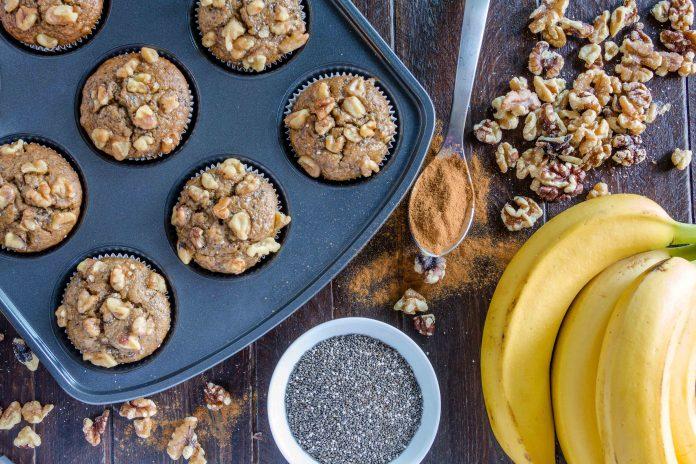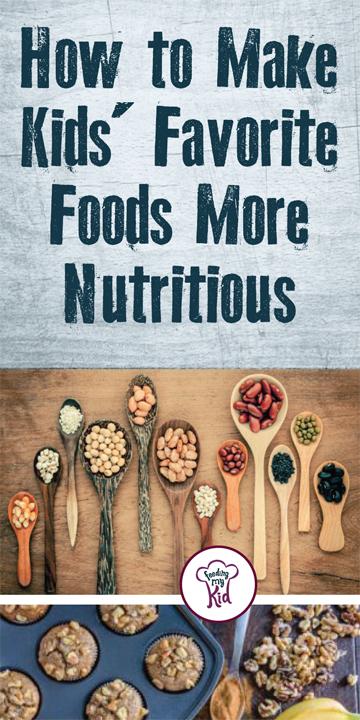 Have you heard of superfood Add-Ins? These add-ins are a great way to promote healthy eating for kids.
Have you heard of superfood Add-Ins? These add-ins are a great way to promote healthy eating for kids.
Check Out These Other Great Resources:
- Make-Ahead Breakfast Cookies. Healthy and Nutritious
- Nutritious Banana Matcha Cookies. A Healthy Cookie Recipe
- Delicious and Nutritious Snack Idea: Crunchy Peas
Healthy Eating For Kids: Use Snacks As An Opportunity to Serve Nutritionally Dense Foods
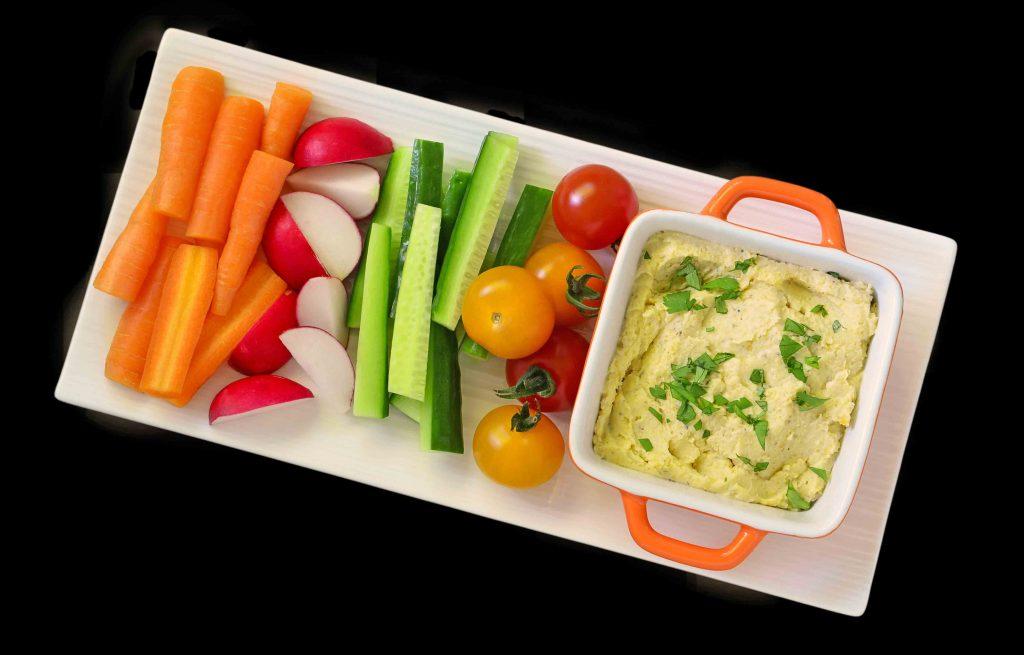
We Know Not All Calories Are the Same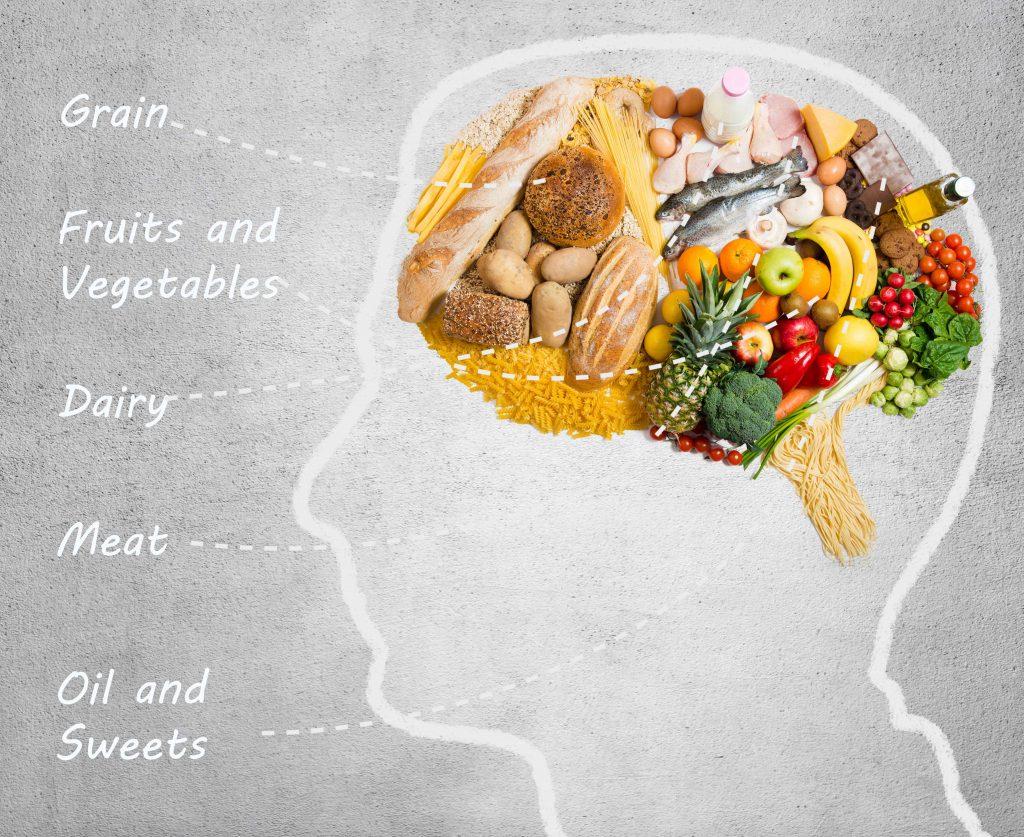
Some Kids Are Small
Picky Eating Can Go Along With Under-Eating
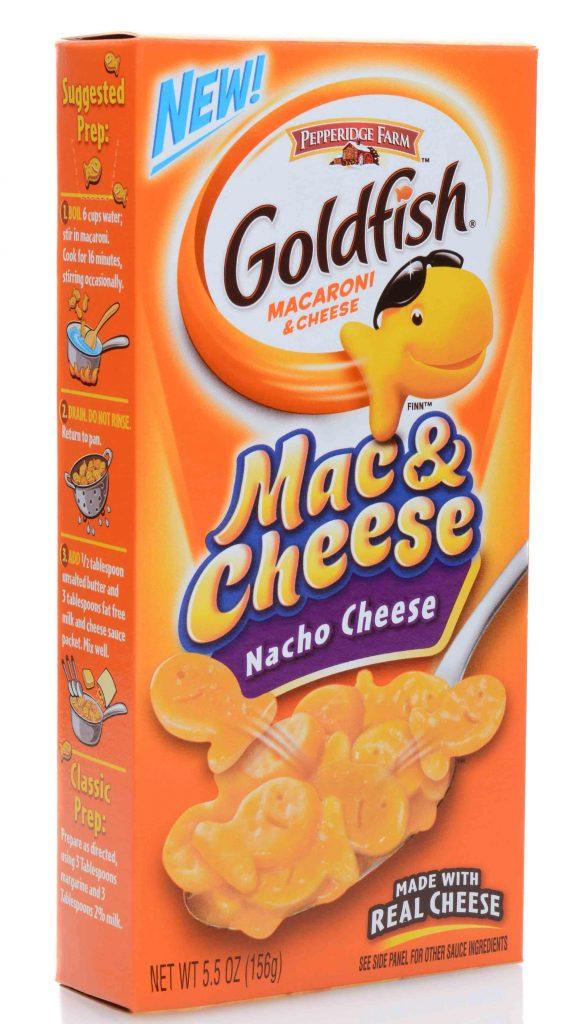
Reduce Empty Calorie Foods
Moderation Is Key
Eat More Fruits, Vegetables, Fish and Whole Grains
Offer Lots of Nuts and Seeds
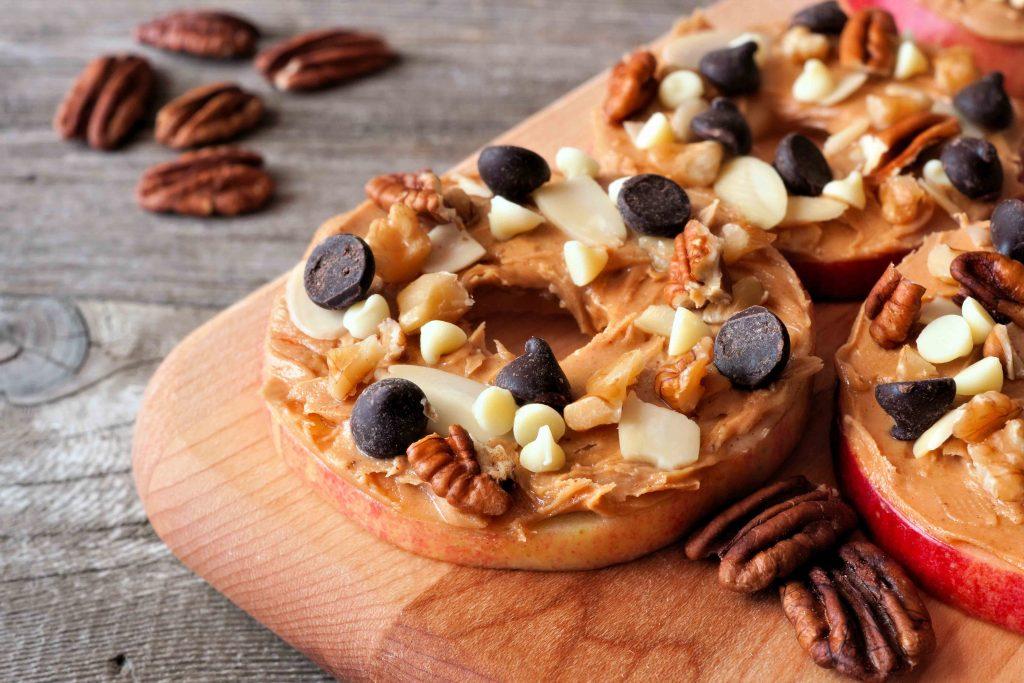
Nuts Are Great Option to Maintain Weight or Gain Weight
- Cashews
- Walnuts
- Brazil nuts
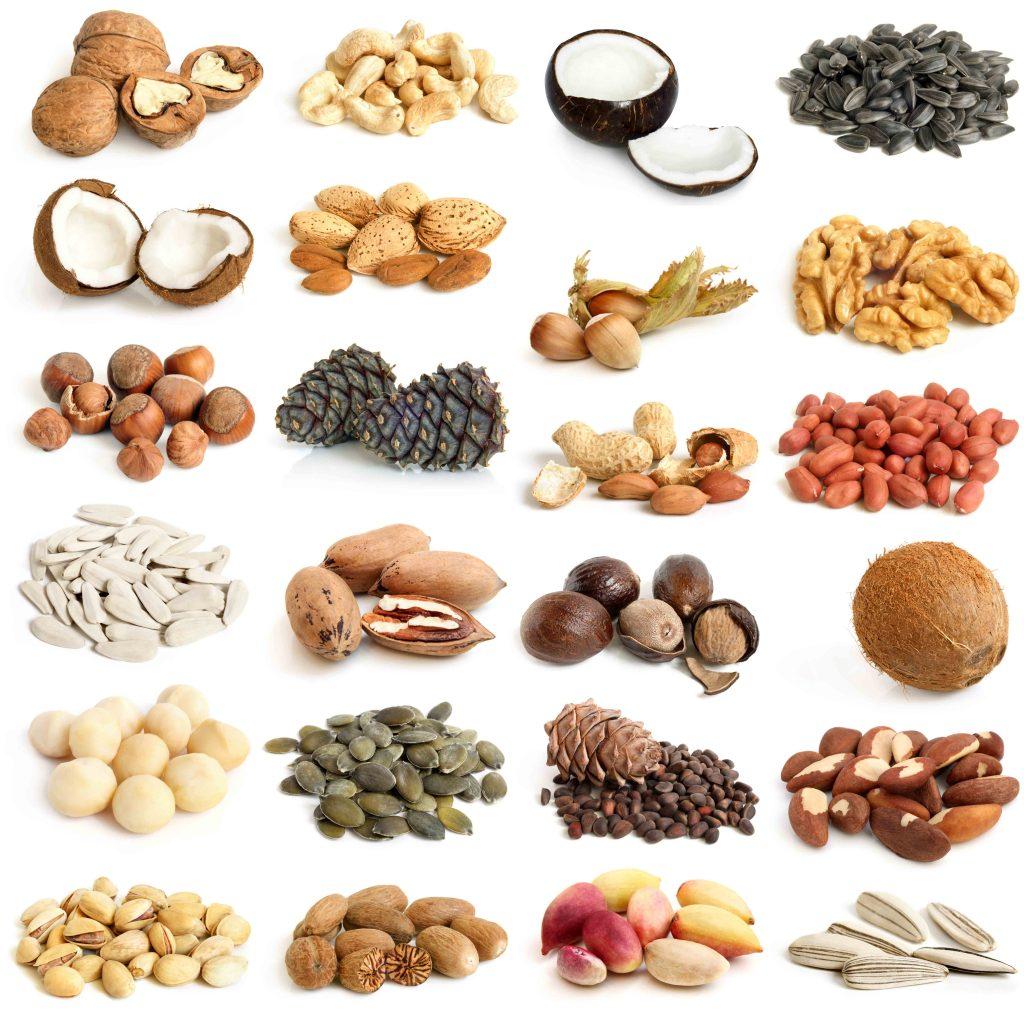
- Pistachios
- Almonds
- Pine nuts
- Hazelnuts (not Nutella because it’s almost all sugar)
Seeds Are Awesome Too!
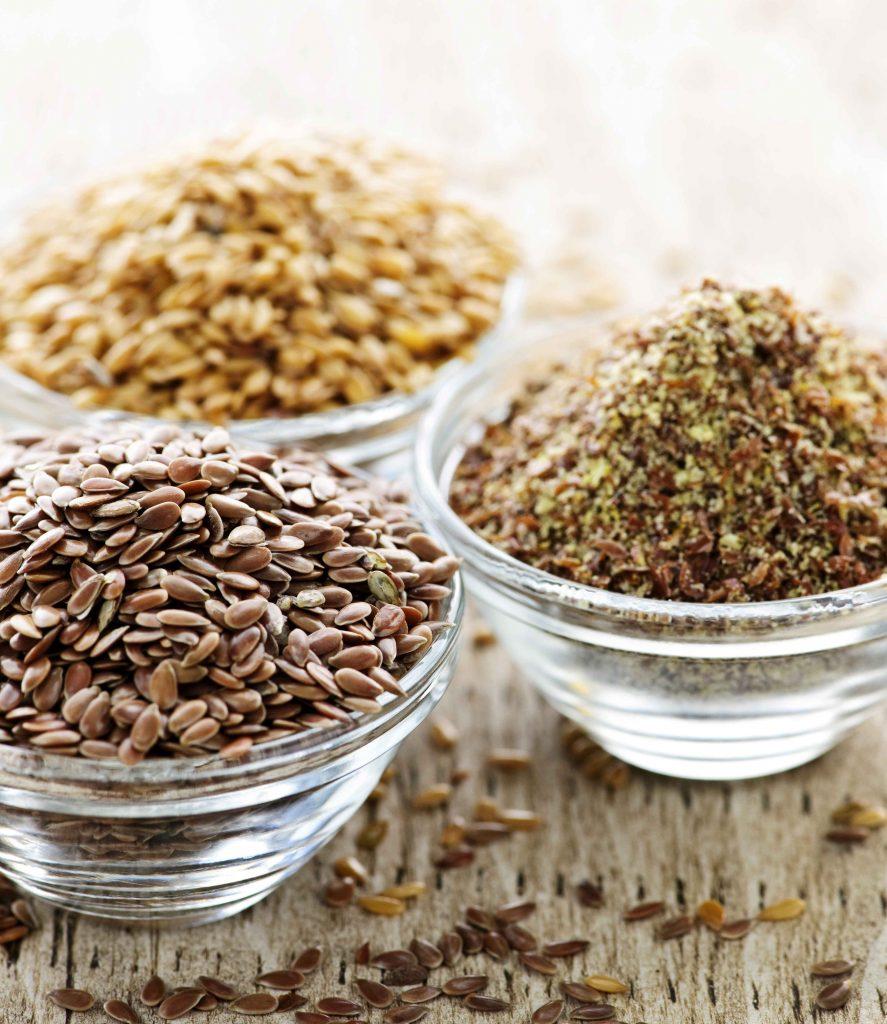 Flax Seeds
Flax Seeds
Chia Seeds
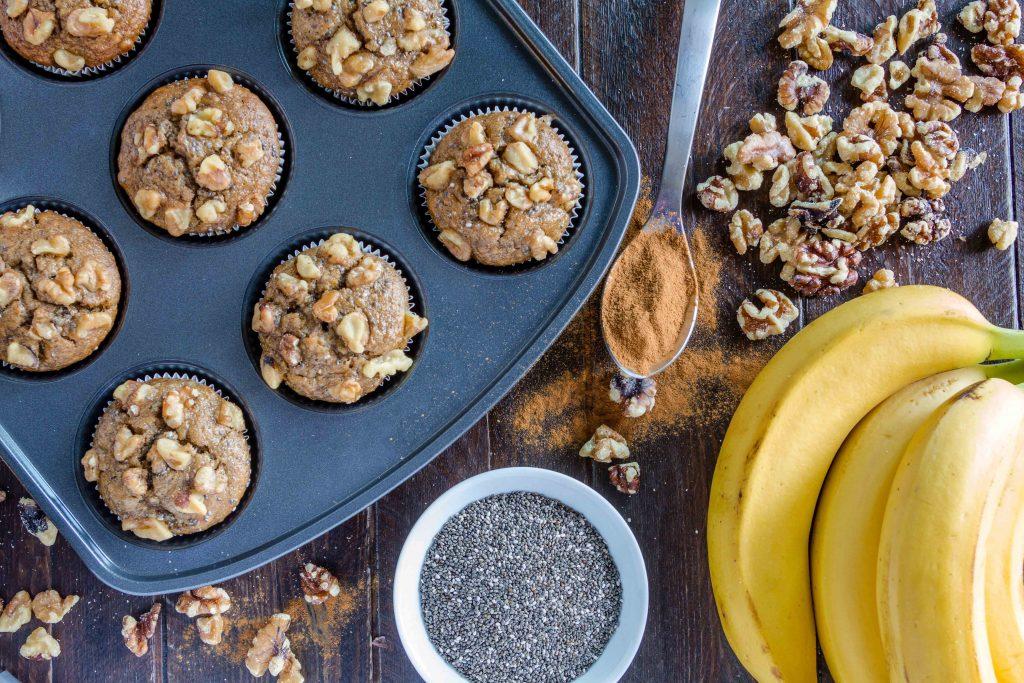 Chi-chi-chi-chia! We’re just as excited about chia seeds as the children that grew “pets” out of them! Chia seeds are higher in antioxidants than any whole food, even blueberries! These little seeds have more protein than beef and more omega-3 than salmon (2).
Chi-chi-chi-chia! We’re just as excited about chia seeds as the children that grew “pets” out of them! Chia seeds are higher in antioxidants than any whole food, even blueberries! These little seeds have more protein than beef and more omega-3 than salmon (2).
It is recommended to soak chia seeds in water or milk so the body can absorb its grand nutrients.
This nutritional powerhouse can be added to almost anything! Top yogurt or cereal, or even bake into bread and muffins. Get more Chia Seed Recipes here.
I’ve even used a 1:3 ratio of chia to water to substitute using an egg in a recipe!
Add chia seeds to muffins, pancakes, oatmeal, casseroles and meatloaf.
Hemp Seeds
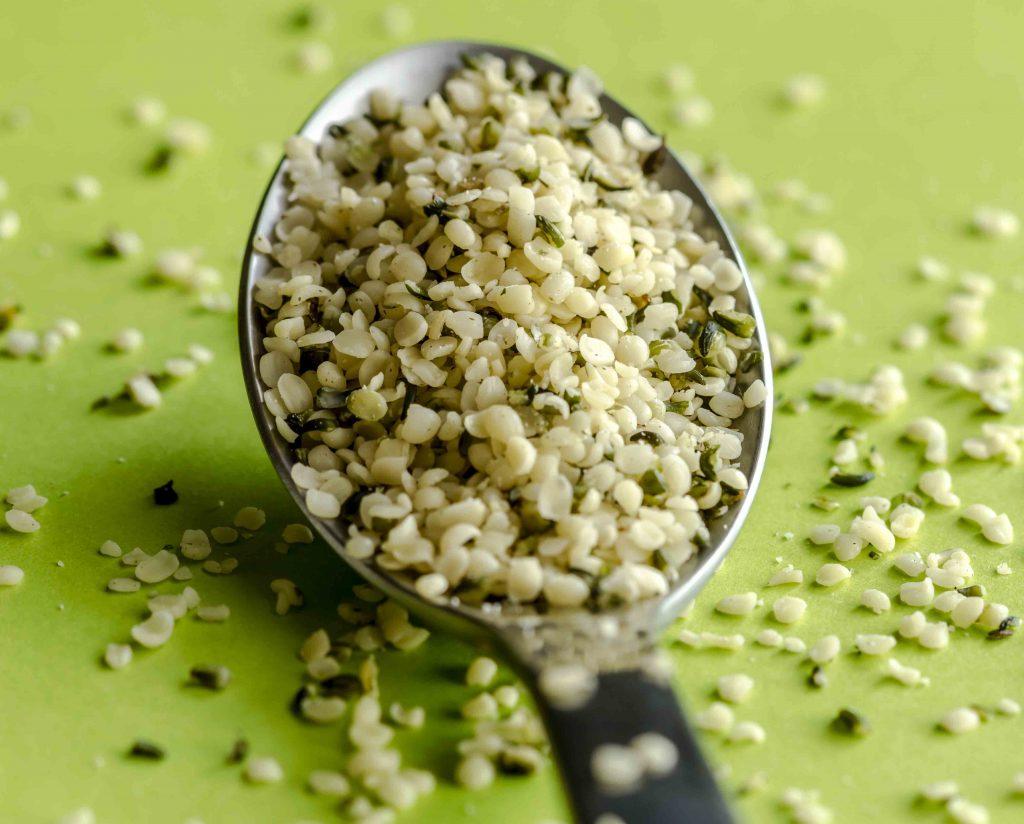 Hemp seeds are very high in essential fatty acids and can improve heart health and function. They are rich in fiber, vitamins, and minerals, and have a subtle nutty flavor that can make a great addition to cereals or salads.
Hemp seeds are very high in essential fatty acids and can improve heart health and function. They are rich in fiber, vitamins, and minerals, and have a subtle nutty flavor that can make a great addition to cereals or salads.
China has been using hemp seeds in their food and as medicine for over 3,000 years (3)!
I sprinkle hemp seeds on the same foods as flaxseeds — so virtually everything. Hemp seeds are more savory and have green specks in them, so if your child is sensitive to having anything green in their food, you may need to ease into this one. Or add it to foods like meatloaf or meatballs, where the green will be harder to spot.
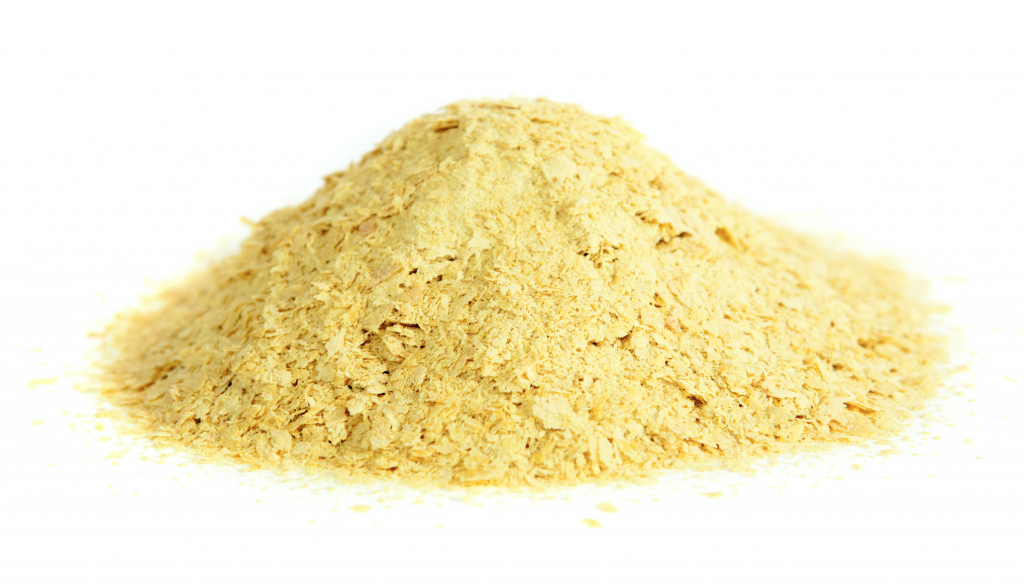 Nutritional Yeast
Nutritional Yeast
Adored by vegans for its cheesy taste, nutritional yeast can be added to pasta bakes, homemade mac n’ cheese, spinach-artichoke dips, soups and even in meatballs! Just imagine the possibilities of adding nutritional yeast to any recipe that calls for a rich and creamy flavor. Not only will this superfood add a blast of cheesy essence to any dish, but you’ll be excited enough knowing the benefits of consuming this nutritional powerhouse.
You can buy nutritional yeast right from our Amazon store or in your local Whole Foods!
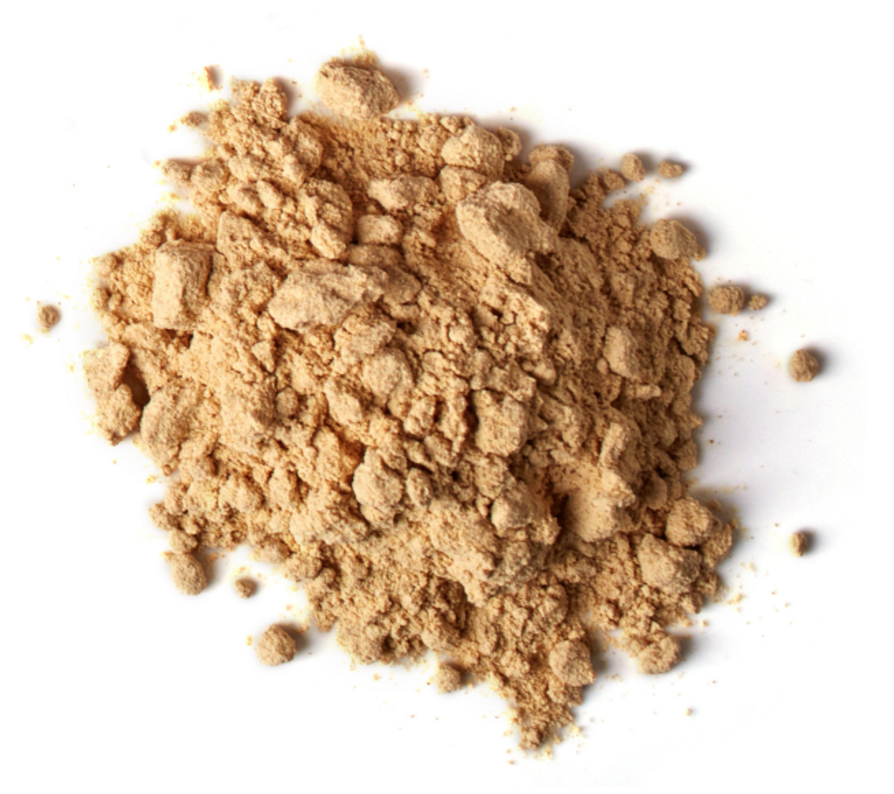 Brewer’s Yeast
Brewer’s Yeast
Similar to nutritional yeast, you can add brewer’s yeast into a variety of foods. Well known for its use in brewing beer, many people misconceive its nutritional worth. Lowering blood sugar levels and improving digestive health are some of it’s highly treasured traits. The mineral chromium in brewer’s yeast is often used as a base for many medicines and for those with diabetes! Expecting mothers also adore its ability to increase breast milk supply. Check out these additional natural supplements to help mom make more milk!
Light in texture, but a bit bold in taste, try adding brewer’s yeast to savory dishes. It’s a great way to add additional health benefits to meals that might be lacking essential vitamins and minerals. Our favorite ways to add brewer’s yeast are in soups and pasta bakes. I’ve even heard it is delicious when sprinkled on popcorn!
You can easily find brewer’s yeast in our Amazon store, too!
Replace All-Purpose Flour for Oatmeal Flour, Whole Wheat, and Almond Flour.
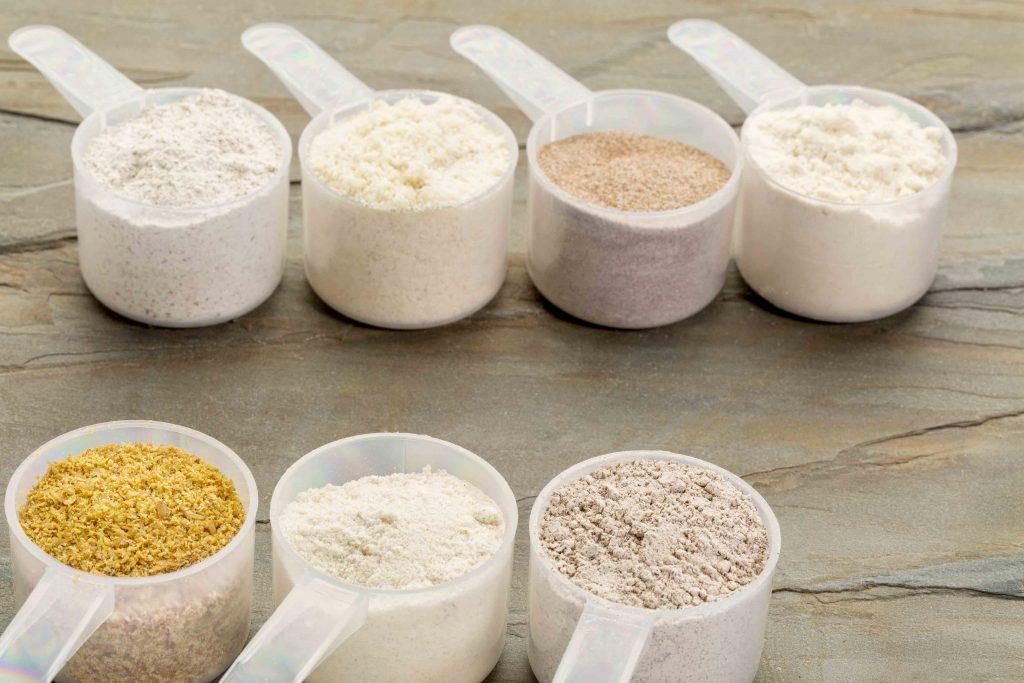 Make the most out of breaded chicken, fish and pork chops! Use whole wheat bread crumbs or oatmeal flour. There is a much healthier alternative to processed plain breadcrumbs that you can find at a store.
Make the most out of breaded chicken, fish and pork chops! Use whole wheat bread crumbs or oatmeal flour. There is a much healthier alternative to processed plain breadcrumbs that you can find at a store.Beans and Legumes 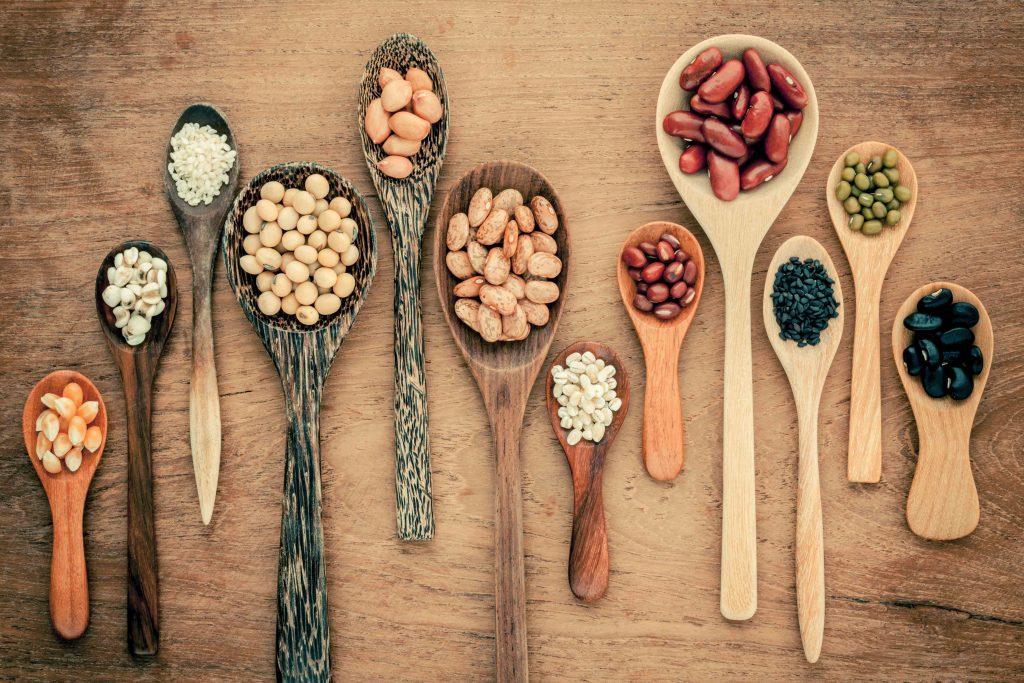
Beans and legumes don’t get enough publicity in the health food world. Packed with protein and filled with fiber, beans and legumes are a staple in healthy eating. They have been found to actually lower cholesterol and provide sustainable energy, unlike other meat-based sources of protein.
Does your kid turn a cheek to eating beans? No problem! Right now, my twins don’t eat beans as far as they know, but they eat them all the time.
There are companies that have turned beans into pasta! Watch our video Get Your Kids to Eat Beans! Using Pasta to learn more. These brands also make pasta from all types of legumes and most of them are absolutely delicious. Others are good once covered in sauce.
I’ve also made healthy brownies made with beans! For me, it doesn’t compare with the real thing, but my twins loved them.
There are countless ways to sneak them into their diet. In some instances, you can even offer beans or legumes in plain sight through various forms of preparation that your kid will be more likely to try! Check out our bean recipes for more ways to cook beans.
TIP: It’s important you continue serving beans too. If you always hide them then your child won’t know he is eating them and may not grow to like them on his own.
Avocados
 Avocados are an excellent source of healthy fats and are high in nutrient-dense calories. One study described a significant relevance between avocados and pregnancy.
Avocados are an excellent source of healthy fats and are high in nutrient-dense calories. One study described a significant relevance between avocados and pregnancy.
Avocados are high in folate which has been shown to reduce the risk of a miscarriage and neural tube defects (4).
Our brains are actually made up of 60% fat, which undoubtedly shows the importance of consuming fat. New research shows that eating fat does not make us fat. One doctor pointed out if we eat green food, we will not become green and it’s the same way with healthy fats.
Kids need even more healthy fats than adults for their brain and nervous system. Load up on avocados! I have a horrible time keeping avocados so I buy Wholly Guacamole from Costco and use that. It’s organic and it stays fresher longer.
I often take the whole package of Wholly Guacamole and I add some microgreens, spinach, pine nuts and walnuts and grind it up in my blender. I use that as my pesto sauce for bean noodles. It takes just a few minutes and it’s so nutritious! We all gobble it up.
Or I add avocado, micro greens, or sprouts to some sprouted bread and serve it. My kids pull off the micro-greens and eat them individually calling them grass. We have fun with it. I was surprised by their willingness to eat them. I think it stems from us gardening together and they often pull the herbs off the plants and eat them. Watch the video for all the reasons on why you should garden with your kids.
Salmon
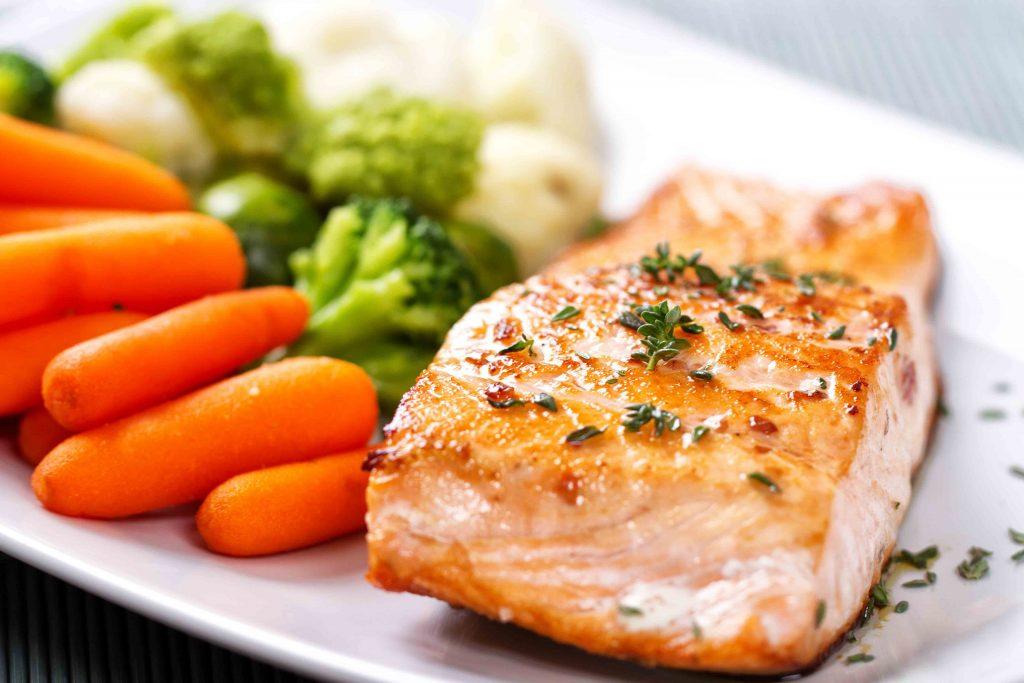 It’s no secret that salmon has benefits to your health. For starters, salmon has tons of Vitamin D in one serving. It also has been shown to improve cognitive development in infants and academic performance in children, as well as lessen ADHD symptoms (5).
It’s no secret that salmon has benefits to your health. For starters, salmon has tons of Vitamin D in one serving. It also has been shown to improve cognitive development in infants and academic performance in children, as well as lessen ADHD symptoms (5).
Try to eat fresh caught salmon as much as possible versus farmed raised. I know this one can get costly!
If your child doesn’t eat fish, try pureeing it and adding it to meatballs, mac and cheese, or other foods where the flavor can be hidden. Remember to also serve a little on the side of the dish to get your child used to seeing salmon in its natural state.
I serve salmon spread for breakfast. It’s smoked so I try to limit how often we eat it, but my daughter absolutely loves it. We also eat lox, nova, and sushi.
We do our best to offer the same types of foods in a lot of different preparations, textures, and flavors.
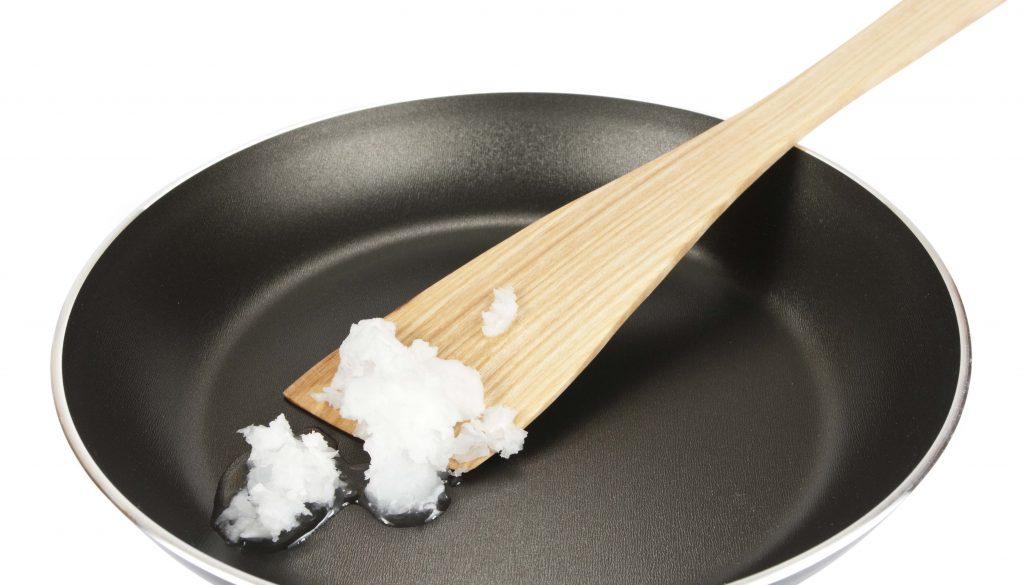 Olive and Coconut oils
Olive and Coconut oils
Skip the Pam spray and vegetable oil and opt for coconut or olive oil instead!
Olive oil is a healthy dietary fat with over 50 years of research pertaining to its benefits to the human body. It has been shown to help maintain healthy cholesterol levels and also prevent cell destruction. It’s extremely high in antioxidants, which can benefit your skin and hair as well as your heart health.
As mentioned, kids need healthy fats for brain and nervous system development.
Coconut oil is recently famed for its use in a variety of ways. The media claims that coconut oil fixes everything, from being a replacement cooking oil to removing makeup and extending the life of eggs in your fridge. There are countless resources establishing its greatness, but it’s clear that everyone needs a little coconut oil in their lives. Plus, it has a nice sweet flavor. I use this to roast many of our vegetables.
Roasting veggies can bring out the sweet flavor in them, which may help your child like them even more. And it sure beats eating steamed veggies all the time.
Quinoa
Quinoa is a gluten-free grain that is sold in three different styles: white, red and black. If you can purchase sprouted quinoa, go for that one. Sprouted foods are even more nutritious. Quinoa has high levels of protein, fiber, iron, magnesium, and potassium. Quinoa is especially high in fiber, with over twice as much content than other grains (6).
Get tons of vegetarian recipes using Quinoa. Or, learn how to make bread and pizza using quinoa instead of all-purpose flour.
Cottage Cheese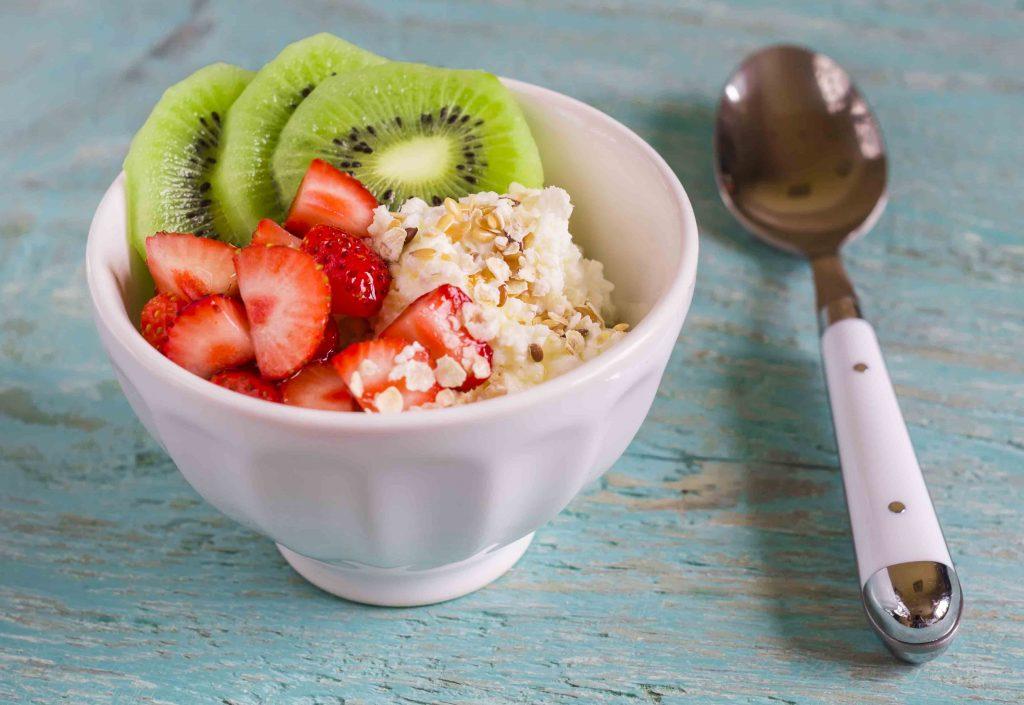
Greek Yogurt
Greek yogurt outweighs other dairy products by being higher in protein and lower in carbohydrates and sugar, so go for the plain variety. Greek yogurt is high in iodine which is important for a healthy metabolism and thyroid performance. The calcium content is another no-brainer, but its biggest winner is the probiotics.
Probiotics help your child’s immune system fight off illnesses and maintain a healthy digestive system. New studies are coming out every day about the importance of keeping our gut health in check. Stay tuned for future articles and videos about this. Also, try Kefir. It’s loaded with probiotics too.
Eggs
Eggs aren’t just stock-full of the nutrient choline, they’re also rich in protein, which is important for building strong muscles (3).
Eggs are an easy food to introduce in a number of meals, they can be mixed in rice for a stir fry or mixed to be made into an omelet. Eggs are an amazing brain food and health food.
Whole Milk, Butter, and Cheese
 New research is showing that whole milk may be better for all of us versus low-fat milk. It helps keep us fuller longer, which can help us reduce our need for empty calorie snacks.
New research is showing that whole milk may be better for all of us versus low-fat milk. It helps keep us fuller longer, which can help us reduce our need for empty calorie snacks.
Milk is rich in calcium, which builds and fortifies strong bones. Milk is also rich in other nutrients that are helpful to any growing, active child. These include protein and carbs, as well as fats (3). All of these nutrients will make your kid stronger, which is why milk makes such a super food.
Complex Carbs (Whole Wheat Bread)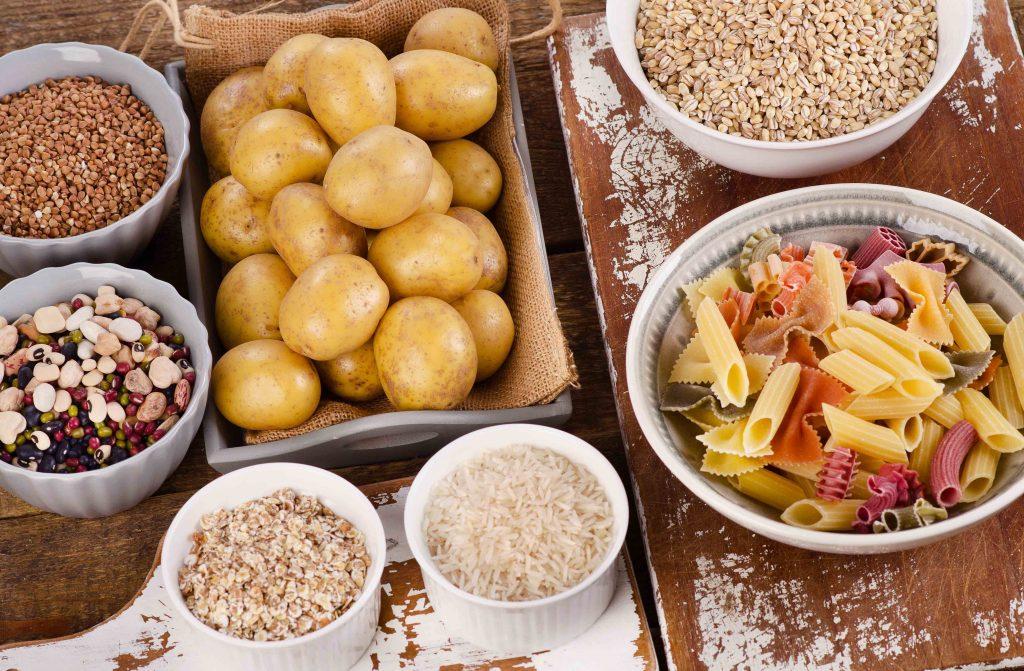
If you have white bread in the house, dump it. While I grew up on white bread, it’s nutrient poor and we should limit how much we eat. We don’t want to load our kids up on empty calories when every calorie counts.
Complex carbs are high in fiber and are great at stabilizing and balancing the brain (5).
Carbs break down into glucose, a sugar that the body can use for energy, but unlike simple carbs, which are troublesome because of how fast they can be broken down, throwing off energy levels and causing unhealthy weight gain; complex carbs break down slower and will keep your child’s body better regulated (5).
By making sure you feed your kid a wholesome meal rich in complex carbs you will help boost his mental powers and make him a thinking machine!
Protein Shakes for Kids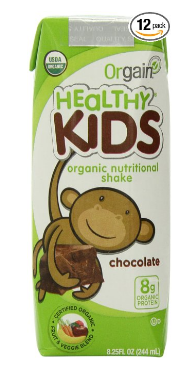
While I prefer to give my kids whole foods, it’s not always possible. I’ve given my kids Orgain Chocolate Shakes, Vanilla or Strawberry before. Their milk chocolate flavor is delicious and they are full of protein and vegetables. Since my twins never get chocolate milk, they do demand these, so I rarely have them in the house. We eat well so I’m less inclined to stock up on nutritional shakes. These shakes have about 13 grams of sugar. I’m not a fan of that much sugar in a beverage, but compared to the ones below, it’s a clear winner.
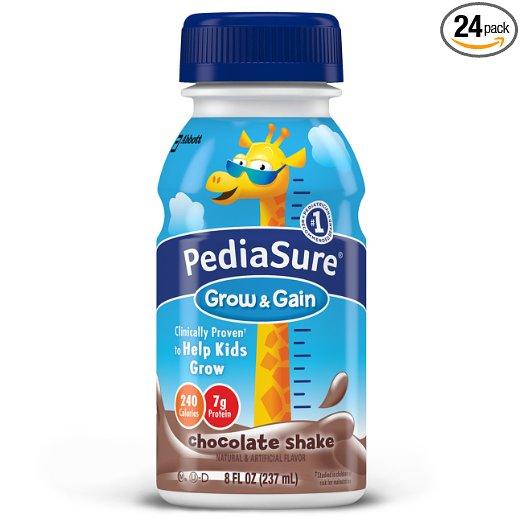 Look out for PediaSure. They have 23 grams of sugar per serving. That your child’s entire day’s worth of sugar in one drink. I’m not a fan of anything with that much sugar in it. The second ingredient after “water” in PediaSure is “SUGAR!” The second ingredient. Find a brand with less sugar!
Look out for PediaSure. They have 23 grams of sugar per serving. That your child’s entire day’s worth of sugar in one drink. I’m not a fan of anything with that much sugar in it. The second ingredient after “water” in PediaSure is “SUGAR!” The second ingredient. Find a brand with less sugar!
I hear Pediatricians recommend this option all the time. They tell parents to not worry too much about what their kids are eating and for them to drink a PediSure. It makes me think, what life-long habits are we teaching our kids? Can this attitude be one of the reasons why 30% of all children are overweight or obese and why 2 out of 3 adults are overweight? Check out our article about How Much do Pediatrician’s Know About Nutrition.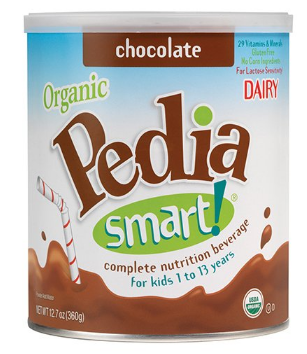
The first ingredient in PediaSmart is SUGAR since you need to add water yourself! PediaSmart does have less sugar than the PediaSure drink by 5 grams of sugar, so that’s already a start. It’s more important than ever to get kids off chocolate milk. This might be a good way to start transitioning off chocolate milk. You can add less and less mixture so bring down the taste and over time completely transition your child to water or plain milk.
If your child is hooked on chocolate milk than these can be better alternatives to plain chocolate milk. There is no judgment here!

Citations:
-
National Institute of Health: Health Benefits of Nut Consumption
-
Chiatrition: Nutritional Information
-
Food and Agriculture Organization: Hempseed As a Nutritional Resource: An Overview and Superfood Health Benefits: 10 Healthy superfood ideas for Young Athletes
-
Medical News Today: Avocados: Health Benfits, Nutritional Information
-
Dr. Axe: 8 Proven Salmon Health Benefits and Nutritional Information and Healthaliciousness: Top 10 foods Highest In Omega-3
-
Authority Nutrition: 11 Proven Health Benefits of Quinoa

